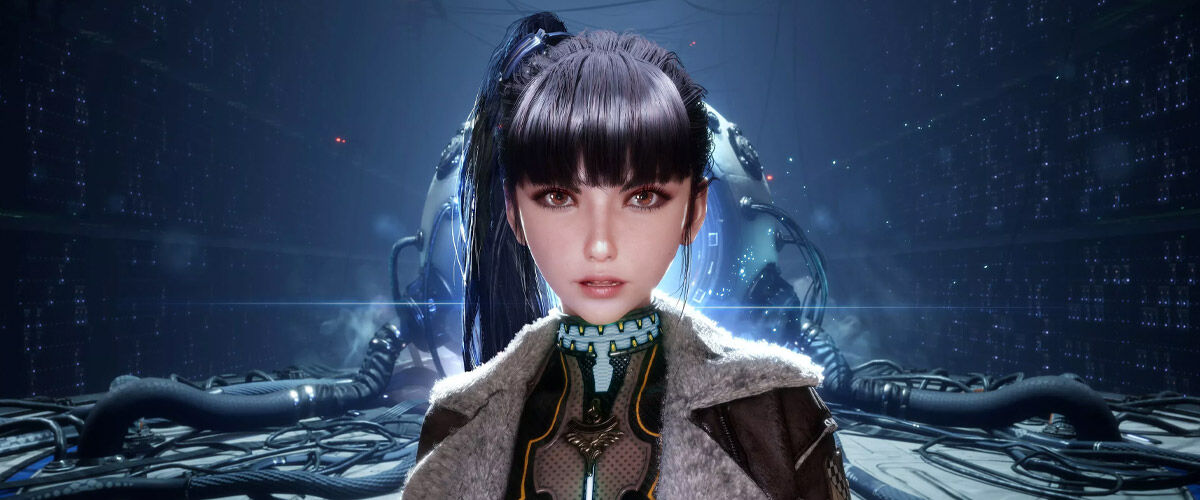Inspiration comes in many forms, and Stellar Blade appears to take after a little bit of everything. South Korean studio Shift Up’s sci-fi romp made waves with first-look footage and images, teasing alluring character designs, slick, dynamic combat, and a semi open-world design, but expectations continued to shift with each new content drop.
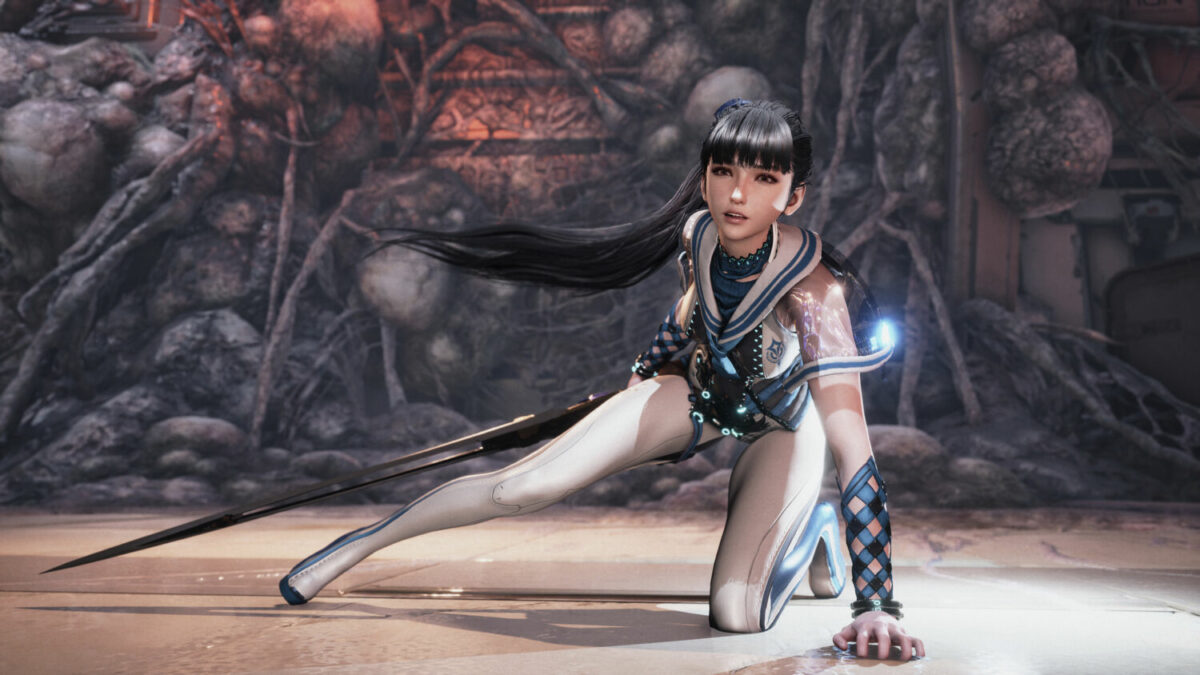
From initial impressions of Bayonetta, partially swayed by the introduction of a stylish femme fatale lead, the action-adventure game evoked other influences the more is known about it. The worldbuilding bears echoes of Nier: Automata, while gameplay taps into a blend of Devil May Cry, and Final Fantasy VII Remake. When the preview rolled around, traces of Sekiro: Shadows Die Twice were also keenly felt, with the music becoming an instant standout.
This final concoction brews a slice of an identity crisis that offers enemy-slashing fun, a visual spectacle, as well as familiar story and gameplay beats. It’s nothing to write home about – not in the same way that established action RPG greats have stood out in the past, at least – but it doles out enough excitement and shine to warrant a dive, as long as players are willing to overlook its misgivings.
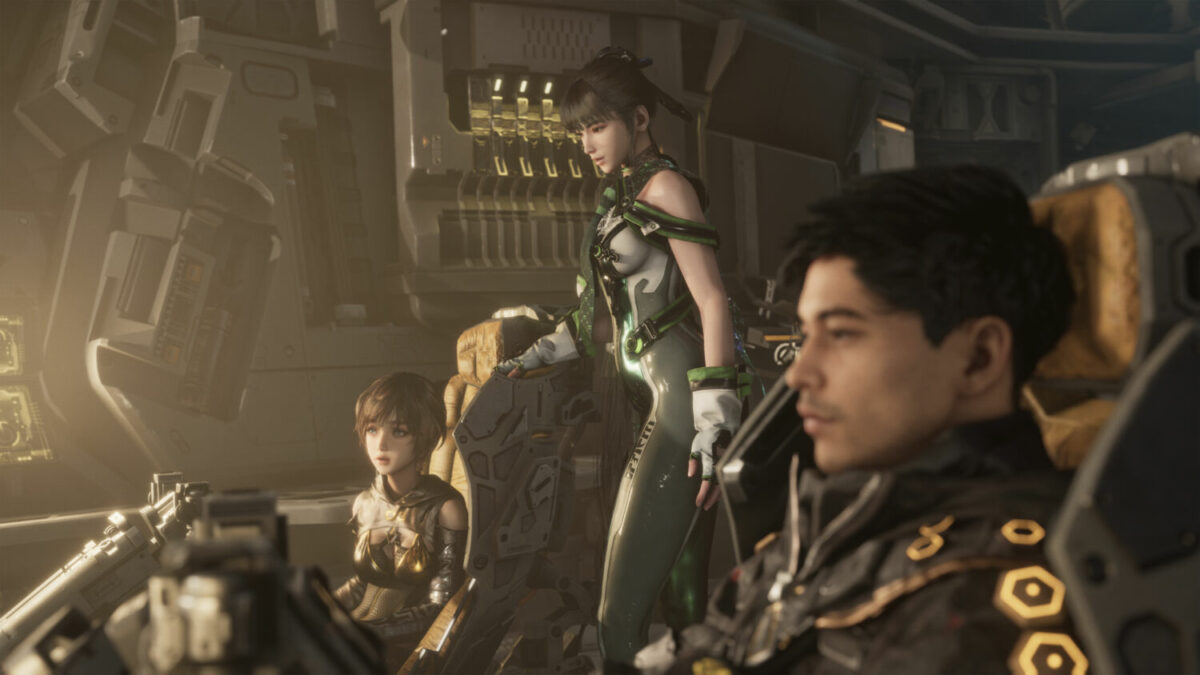
Set in a post-apocalyptic future where humanity is driven from Earth after a losing war against monstrous creatures called Naytibas, Stellar Blade follows Eve, a soldier from the Colony, and her mission to save mankind and reclaim Earth alongside newfound allies Adam (yes, the allusion isn’t at all subtle) and engineer Lily. The straightforward approach carries through the entire narrative – plot points unfold in typical acts, and twists hardly pack a surprise. In particular, those who’ve played through Horizon Zero Dawn and Nier: Automata will find themselves revisiting certain elements.
Simplicity isn’t necessarily an evil, however. The game makes it easy to follow the main story, with more of the world fleshed out through side quests and collectibles. Likewise, exploration proves to be standard rise-and-repeat fare that involves travelling to different terrains, unlocking fast travel spots and rest points (which cause all defeated Naytibas to spawn upon activation), fighting enemies, looting dead bodies, locating collectibles, and more. Some areas are gated behind prerequisites, so players won’t have the same sense of freedom that a full open world affords.

Eve’s quest takes her to various lands, each with its own native Naytiba types and distinctive features. The first region, for instance, spawns grotesque masses of flesh in a war-ravaged cyberpunk setting, while the Wastelands introduces turret-firing marching machines, burrowing creatures, and the harsh, acrid wilderness.
Up to a certain point, though, the lack of level design variety becomes apparent. The maps are largely enjoyable to explore, but the similar-looking sandy, desert-inspired aesthetic of the open-world levels dulls some of the anticipation that comes with stepping into a new environment. There are corridor sequences as well, and both settings involve fixed actions that are needed to further story progression: restoring power to activate door panels or operate camps, locating passkeys and key them in, traversing parkour set pieces, and solving light environmental puzzles. It’s mostly mangeable, until an overly-long sewer-trawling segment during the main story that sees fatigue and monotony creeping in.
Xion, the only surviving town with human life, serves as the central hub of activity. Major NPCs can be found here, alongside places of interest like a barber shop, a fish merchant (there’s a fishing mini-game, for those wondering), and various vendors. The bulletin board is where players go to accept side quests and commissions, ranging from answering distress calls and locating missing individuals to cracking codes. Where some are predictably mundane, especially those of the fetch quest variety, others turn out to be surprisingly deep, sobering, or enlightening – more than the main narrative, even.
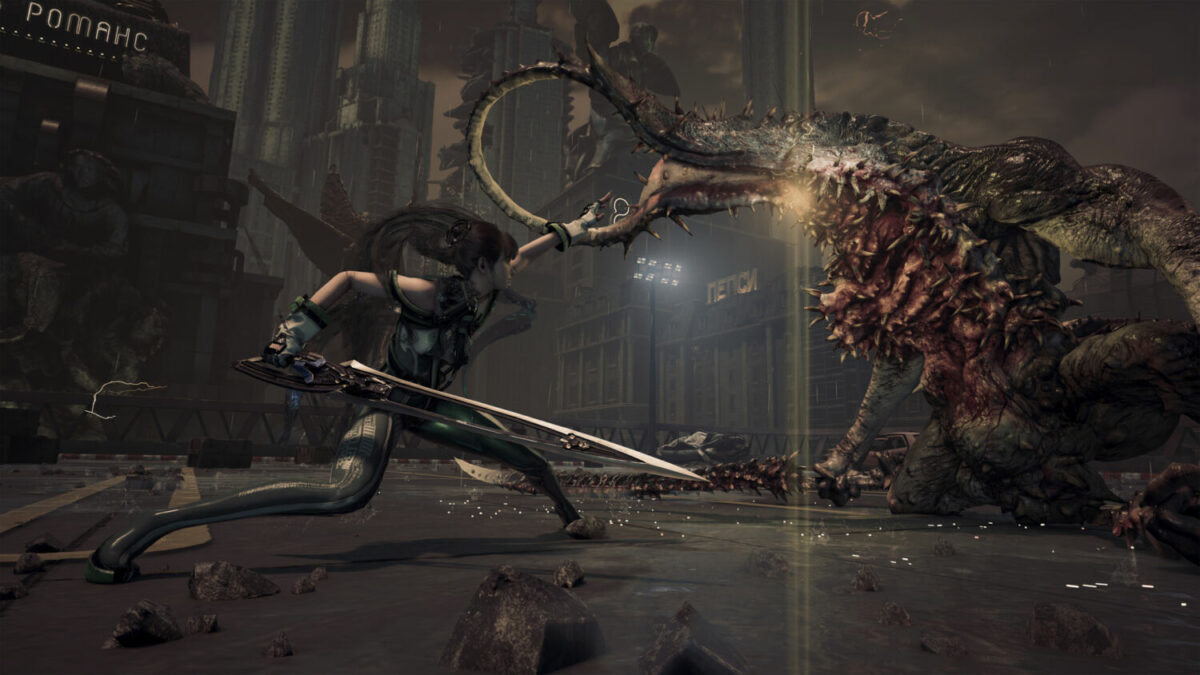
As a whole, Stellar Blade adopts a lot of classic mainstay elements from the action-adventure genre. Expect skill trees, quick time events (QTEs), equipment upgrades and customisation, and yellow paint indicators for traversal, as well as perfect parry, perfect dodge, and some good ol’ hack-and-slash action.
The flashy affair ends up being a mixed bag, despite showing initial promise. While combat arguably brings the most nuance to gameplay, it doesn’t offer enough finesse with slight input delays, awkward, disjointed movements, finicky interactive controls, and inconsistent execution windows. The premise is straightforward and all too familiar to genre veterans: hack and slash your way to victory in the most stylish way possible.
Like its action RPG (APRG) contemporaries, Stellar Blade inherits the same emphasis on quick reflexes and precise timing. Striking back at the right window of opportunity, chaining combo attacks, and pulling off successful parries are key here, with players able to carry out different colour-coded evasive maneuvers in battle a la Sekiro: Shadows Die Twice. The first, Blink, is indicated by a blue glow, and allows Eve to teleport behind the enemy and land a devastating assault, while Repulse, highlighted in a pink hue, pushes her away and leaves the opponent open to ranged attacks.
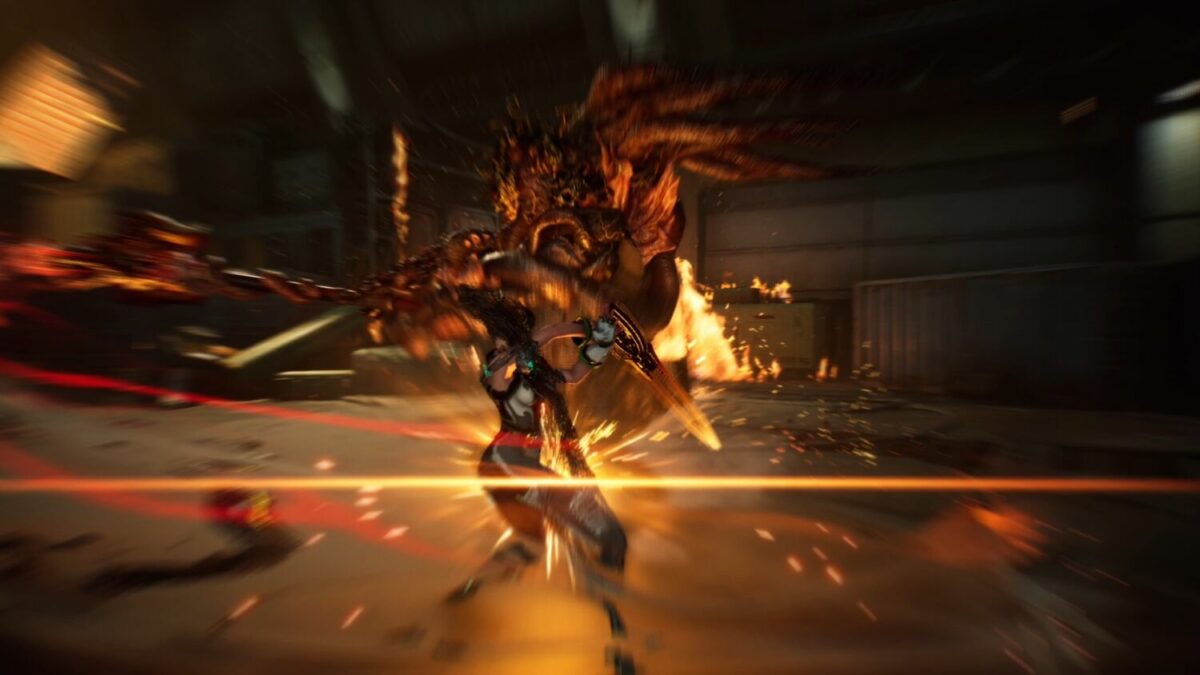
In theory, the mechanics appear to add a more dynamic touch to gameplay. However, the execution doesn’t quite live up to its potential because the basic dodge feature, which both are built on, is wildly unreliable. The same kind of attacks can have different timing windows, and it feels as though Eve is slow to respond to a key input. To that end, a perfect dodge would ideally trigger a red slow-time effect, affording a silver of opportunity to follow up with chain attacks. Missing the cue means players won’t be able to do so, and it can be a major source of frustration during boss fights or when fending off stronger mobs.
For a game that touts combat as its crown jewel, this misstep can be a dealbreaker, especially since its effects bleed into other areas. The easiest workaround is to equip Eve with dodge-focused gear and unlock skills that increase the timing, but the issue will still persist, albeit at reduced frequencies. Player loadouts can be managed by customising Exospines and Gear, with the former enhancing specific traits or mechanics, and the latter packing bonus effects.
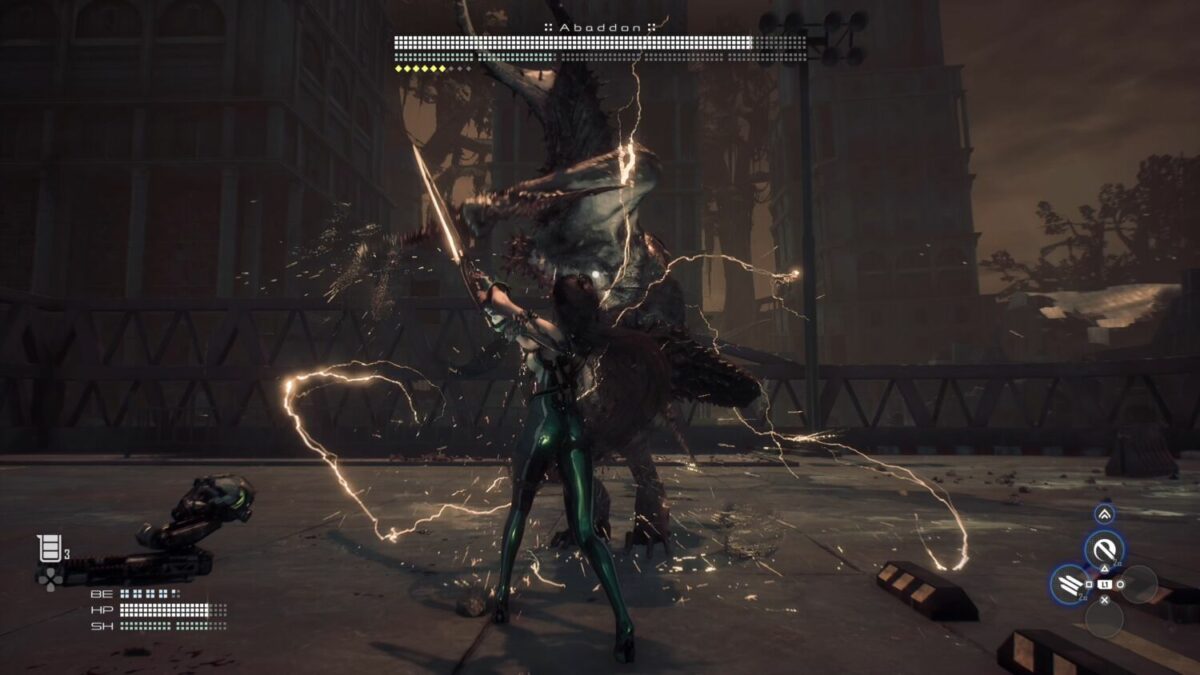
It doesn’t help that the counterattack system isn’t quite intuitive, either. Invincible frames (or i-frames), which allow players to become invincible for a small moment when certain actions are performed, are extremely tight, leaving players highly susceptible to interruption and damage in the midst of executing follow-up chain attacks after a perfect dodge or parry. A source of solace is Stellar Blade’s less punishing treatment with Game Over and deaths, making it more palatable to swallow the frustration of starting over.
Meanwhile, finicky interface pop-ups result in discrepancies before and during battle – not only is it common to experience a delay in the button prompt for a stealth takedown or aerial attack, there’s also a disruptive pause after finisher animations that prevents an immediate attack or action. There’s step-in on Eve’s sword swings as well, so players may often find themselves slicing through air instead of engaging an enemy.
Outside of the battlefield, this clumsiness translates to imprecise platforming elements. The game invites individuals to scale walls, swing across hanging bars, run across surfaces, climb ropes, and more, but doesn’t quite achieve what it sets out to do. Despite the well-meaning intention to introduce gameplay variety, these movements often feel stilted. Sprinting is a little sluggish, and it’s easy to miss the landing from a height. Considering that the main story includes a fair number of parkour segments, traversal can understandably be trying and tedious.
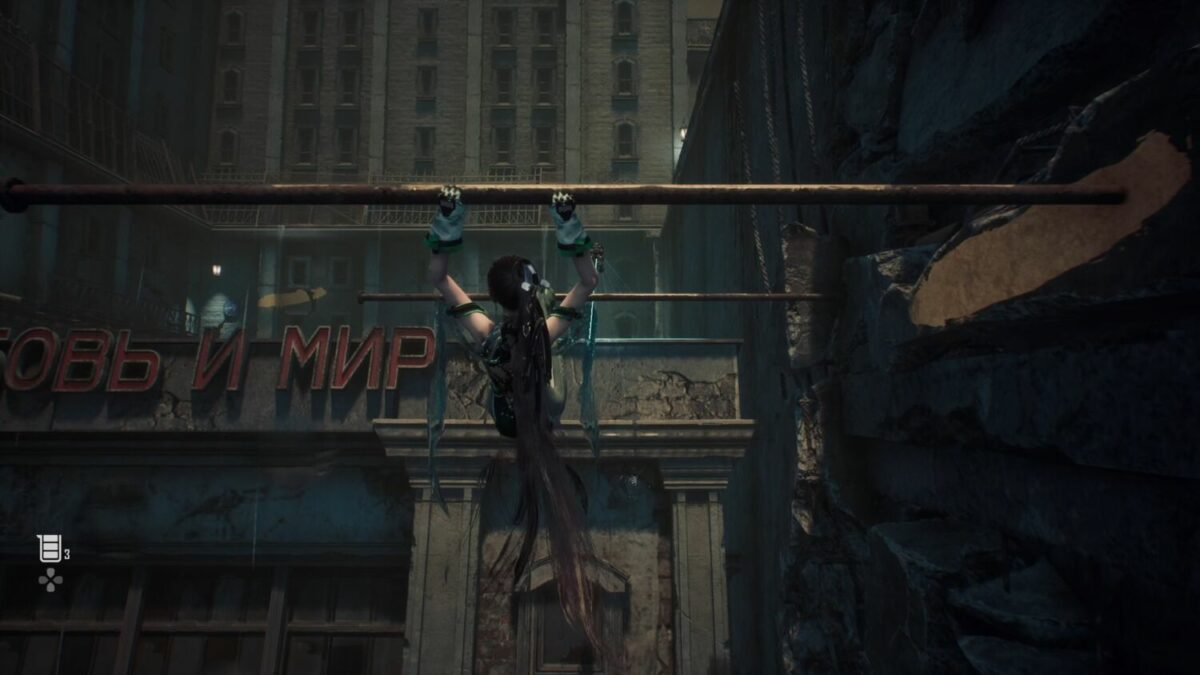
It’s unfortunate that Stellar Blade struggles to harness its full potential, because at its best, the hack-and-slash romp promises an enthralling, dazzling spectacle. The animated cutscenes that unfold pre- and mid-battle are soaked in visual glory, with the smooth, dynamic action choreography proving effective in kick-starting the adrenaline machine. Slicing, dicing, and hacking enemies gives off a crisp, delightful crunch, supported by the haptic feedback on the PlayStation 5 DualSense controller that lends weight to each strike and parry, as well as resistance to the pull of a trigger.
Boss fights, in particular, are a standout. Distinctive designs aside, the epic, gripping battle music – masterfully crafted by Studio Monaca, helmed by NieR: Automata composer Keiichi Okabe – serves as the perfect backdrop to the fast-paced, frenetic dance taking over the battlefield. It feels rewarding to hit the sweet spot of dodging and parrying, and unleashing Beta and Burst attacks (which require charging) brings a satisfying rush.
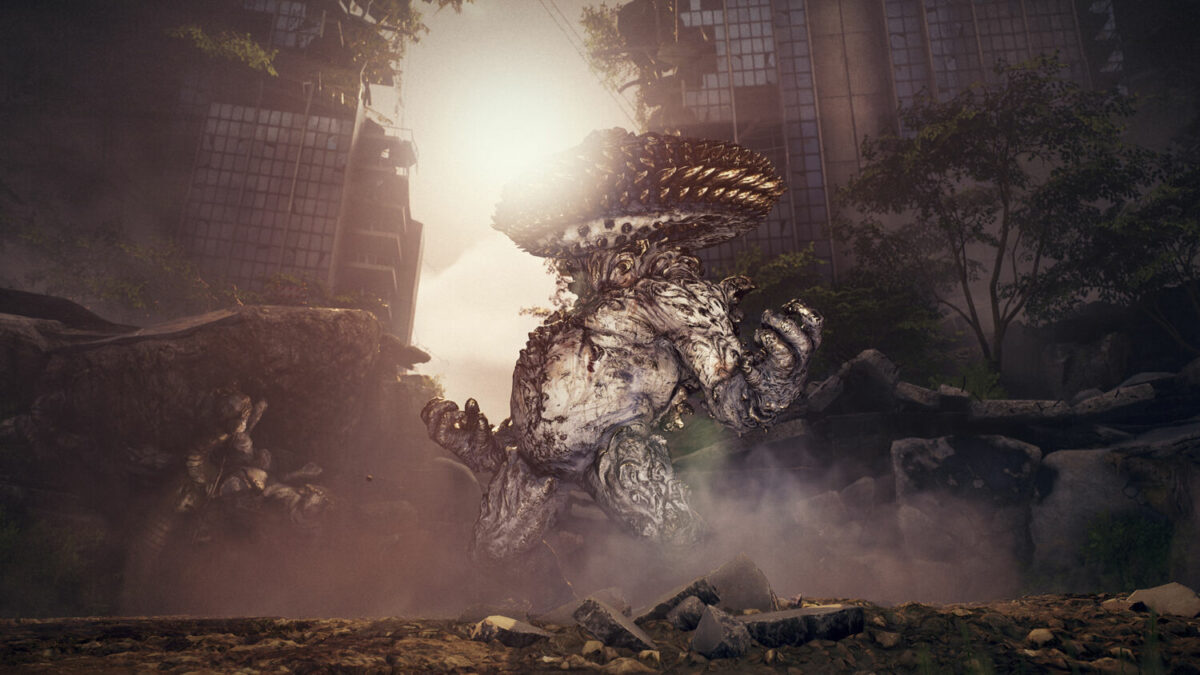
The enjoyment is further enriched by an optimised performance on the PlayStation 5. Shift Up’s debut title runs fluidly and seamlessly, with hardly any frame rate drops over the course of gameplay, even in bigger-scale battles. There’s great attention to detail, from small actions like Eve running down the spine of a book with a finger to the larger cityscape with personality-tinged features, including graffiti, streetwear design, and the like.
In fact, visual excellence proves to be the game’s sharpest edge. Stellar Blade delivers eye candy in spades, starting with Eve herself, whose form-fitting outfit, jiggle physics, and svelte figure have revived the age-old debate about sexualisation of women in video games. While some costume options do seem to accentuate her assets, the fan service stays within reasonable boundaries, and instead adds Bayonetta-like appeal to an otherwise flat, one-dimensional character who’s difficult to form an emotional connection with.
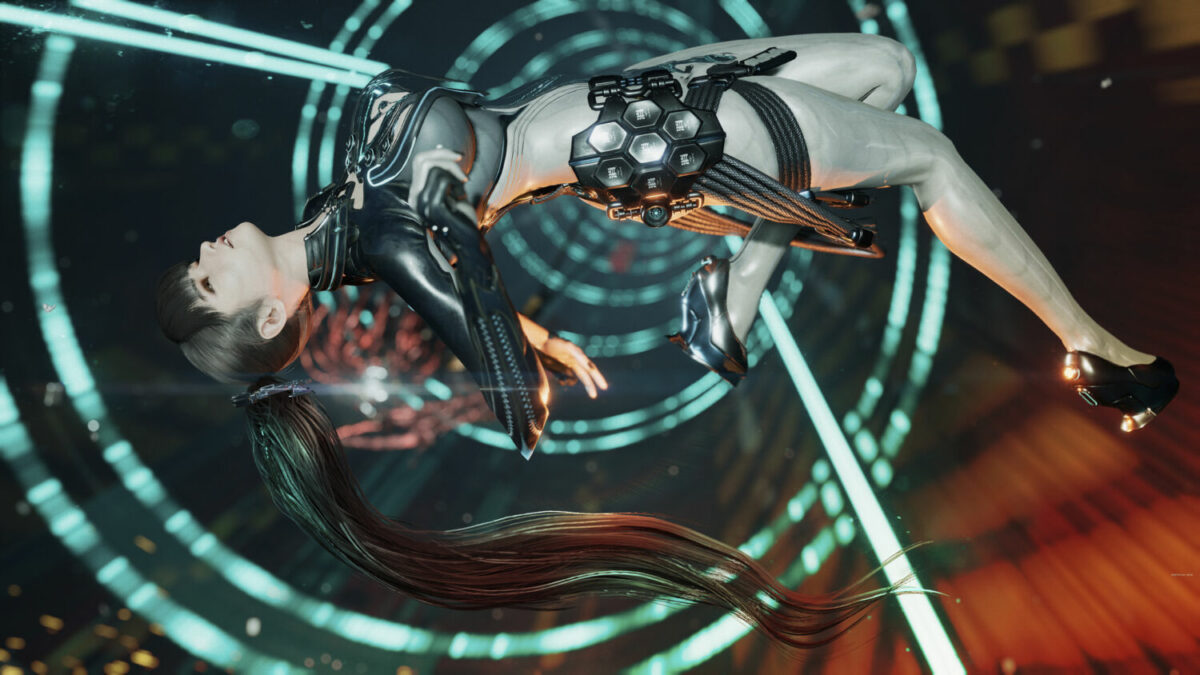
Don’t be mistaken – the Korean dub deftly breathes life into Eve, fleshing out her expressions and tonal inflections. It’s the writing, or perhaps translation, that stumbles here, attaching her to generic-sounding dialogue, and insipid character interactions. Such chinks in its armour are usually regulated to the backseat, however, with a shiny, pretty veneer offering a cohesive futuristic-themed design language, visually arresting cinematic sequences, and an overall stylish presentation. After 26 hours, one thing is for certain: there are a lot of, well, stellar sights to delight in, and little to complain about.
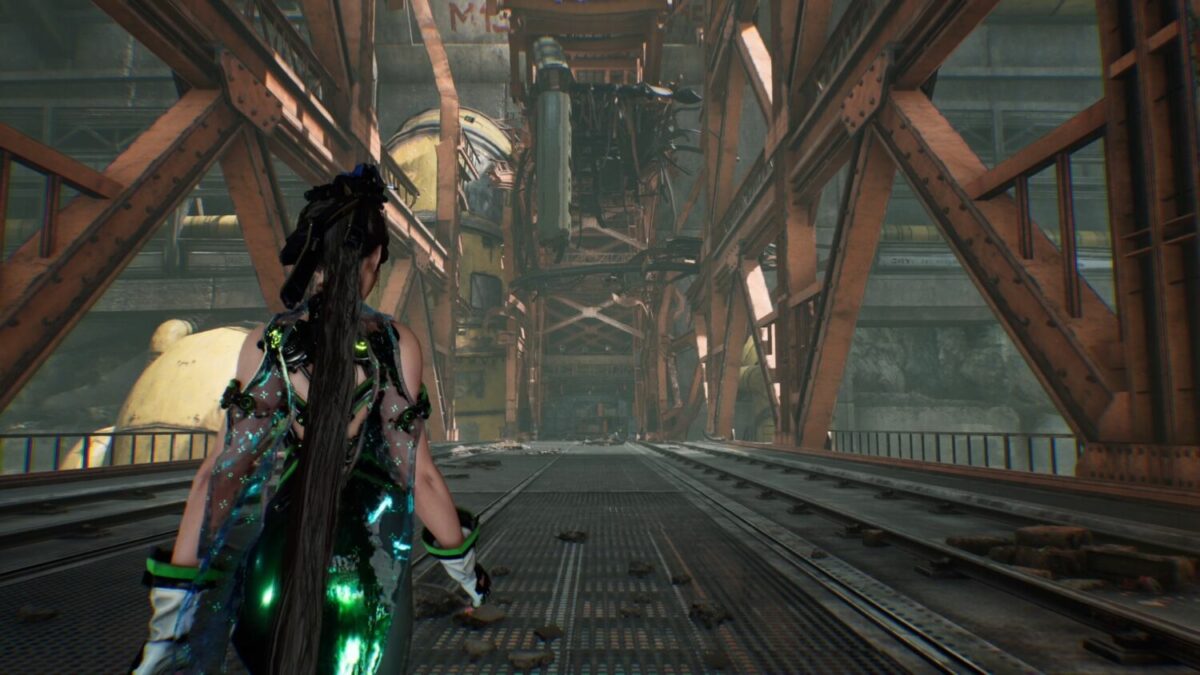
In chasing the footsteps of ARPG contemporaries that came before it, Stellar Blade grapples with finding its place in a well-established genre. It fizzles out with a predictable mediocre story, janky traversal mechanics, and sloppy combat fundamentals, dulling the appeal of an attractive exterior. Still, there lies beauty in imperfection, and Eve’s journey draws charm from its audiovisual splendour, striking design flair, and epic musical arrangements. Above all, it makes slicing enemies into ribbons a thrilling and fun time, marking a confident debut entry from Shift Up.
Stellar Blade launches 26 April for the PlayStation 5.
GEEK REVIEW SCORE
Summary
A charming imperfection, Stellar Blade lacks the finesse and polish that flow in the veins of ARPGs, but packs enough substance and style amid its missteps to make an impression.
Overall
7.6/10-
Gameplay - 7.5/10
7.5/10
-
Story - 6.5/10
6.5/10
-
Presentation - 8.5/10
8.5/10
-
Value - 8/10
8/10

